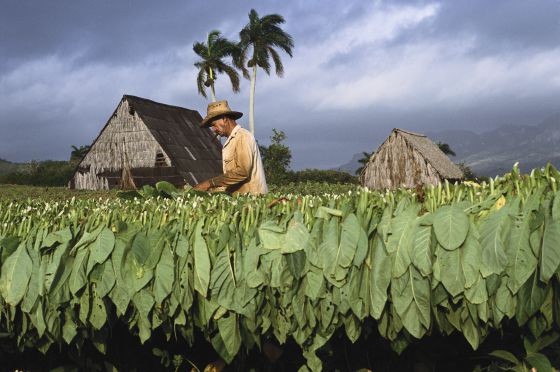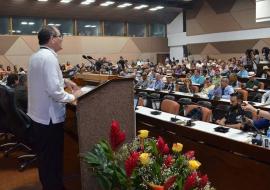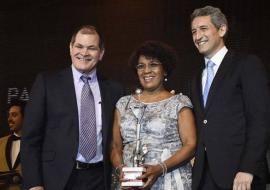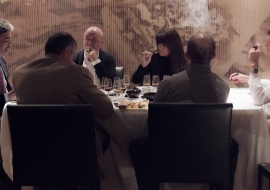A Trip to the Land of the World’s Best Tobacco

Guests had the chance of sharing views with tobacco planters who boast the kind of knowledge and expertise only long years of hard work devoted to tobacco can actually provide. Some of them have been recognized with the prestigious Habano Awards for their high productive outputs and contributions to the making of top-of-the-line cigars. A good case in point is Ivan Maximo Perez, a producer of both sun-grown and shade-grown tobacco with over 30 years of field experience under his belt.
Like many of his employees, this Habano Man is recipient of a family legacy in which tobacco is their livelihood, passion and sacrifice. He explains the harvest is in full swing right now, following a slow start in December (leaf collection) and a whole year of plentiful rainfalls that forced them to drain water off time and again. However, the end results paid off.
Ivan Maximo takes care of his plantations with organic products that make the plants grow strongly and stave off plagues. He combines the secrets of an ancient tradition with cutting-edge technology applied to the growth of tobacco.
Women also pitch in a hand in the harvesting process. They’re tasked with knitting the green tobacco leaves together that will be dried in the curing barns. They also have a say in the selection process, conducted by the Enterprise for Tobacco Growth and Storage, the entity that buys the tobacco from the planters. It’s here where the leaf endures a second fermentation process to remove impurities and acidity levels. Then the leaves are pigeonholed depending on their role on the hand-rolling of the habanos –filler, binder or wrapper.
Finally and after the filler and wrapper leaves have been labeled, they go through the wick-removal process before being handpicked on the basis of their sizes and features and shipped to the planks where they are grouped and straightened out.
During the course of an intense day, guests attending the 17th Habano Festival learned about the origin of the Cuban cigars, from the seedlings all the way to the hand-rolling. They understood not only that the characteristics of the soils exert influence on the making of the world’s best cigars, but also that knowledge passed on from generation to generation plays a major role too.










